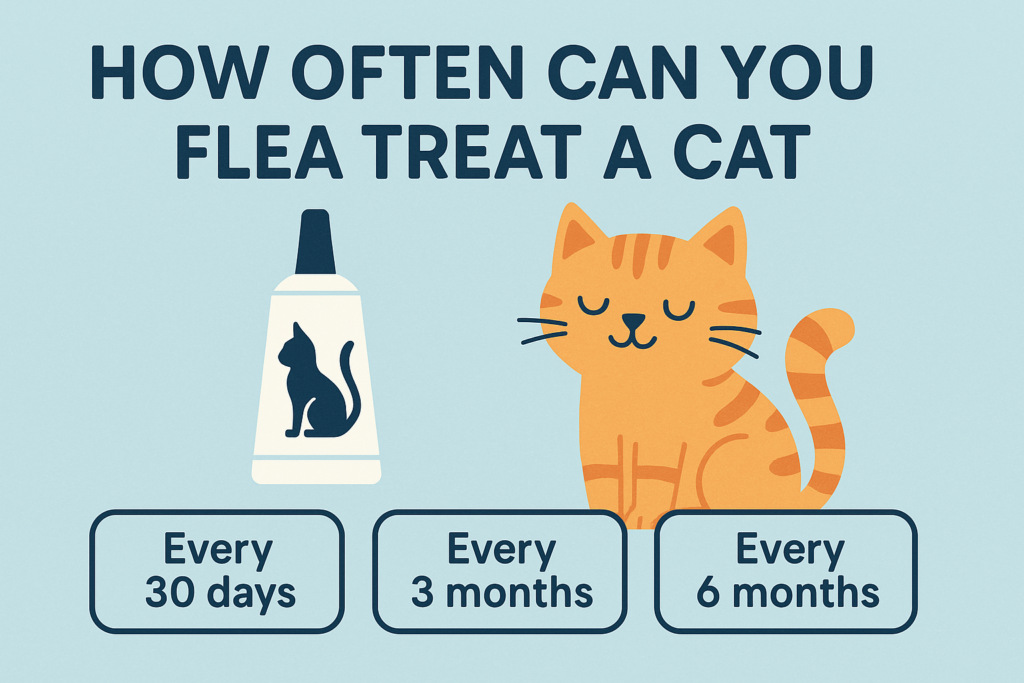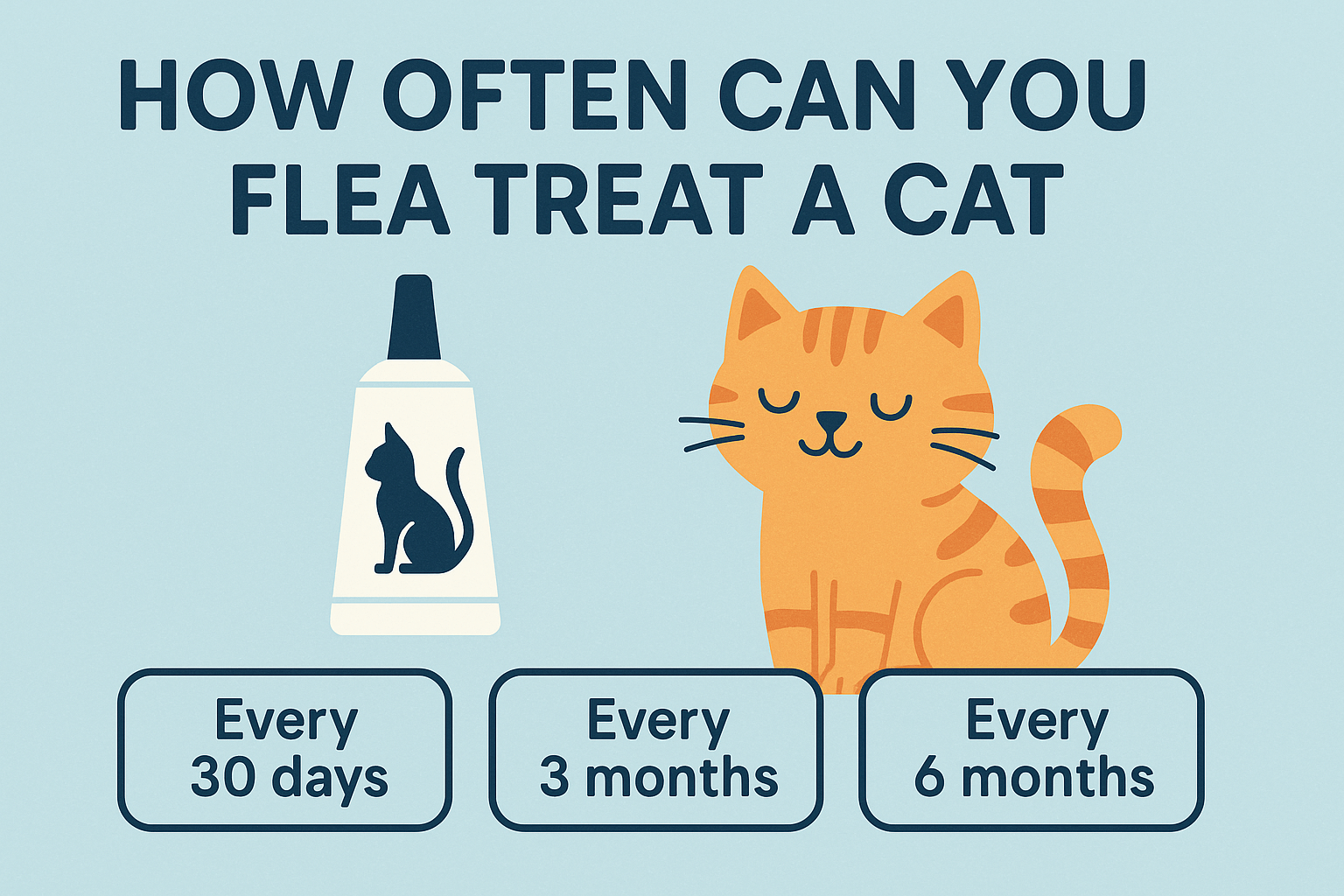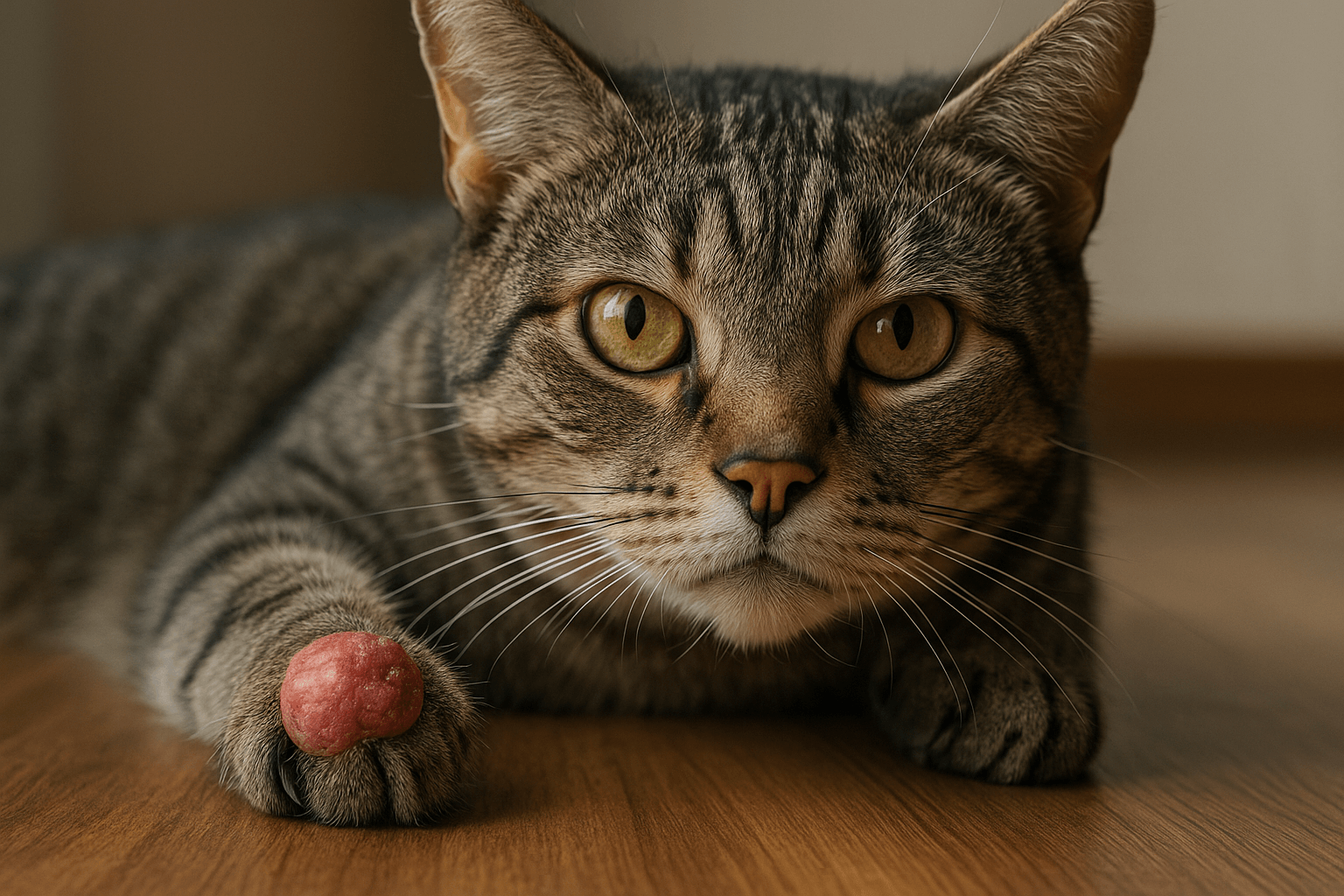How Often Can You Flea Treat a Cat?
Fleas are more than just an annoyance—they can cause discomfort, irritation, and even serious health issues for your feline companion. As a responsible cat owner, understanding how often you can flea treat your cat is crucial to keeping them safe and healthy. While flea treatments are highly effective, overusing them can lead to adverse effects, making it essential to strike the right balance. In this blog post, we’ll explore the dos and don’ts of flea treatment schedules, discuss the importance of following product guidelines, and provide practical tips to ensure your cat remains flea-free without compromising their well-being.
Expert Insight on Tick and Flea Treatment for Cats
“Tick and flea infestations are two of the more common issues facing pets and their parents. Because of this, tick and flea treatment for cats is an essential part of your pet’s care routine. Using a monthly flea and tick medicine for cats can ensure your furry companion stays healthy and pest-free.”
Understanding Flea Treatment Frequency
The frequency of flea treatments depends on several factors, including the type of product used, your cat’s lifestyle, and the severity of the flea problem. Here’s what you need to know to determine the appropriate schedule for treating your cat.
Follow Product Instructions:
Always adhere to the manufacturer’s guidelines for application frequency. Most topical treatments and oral medications are designed for monthly use.Consider Your Cat’s Environment:
Indoor cats may require less frequent treatments compared to outdoor cats who are more exposed to fleas. Assess your cat’s risk level accordingly.Monitor for Flea Infestations:
If you notice signs of fleas, such as excessive scratching or flea dirt, consult your vet before increasing treatment frequency.Avoid Over-Treatment:
Using flea treatments too often can lead to skin irritation, toxicity, or other health complications. Stick to the recommended schedule unless advised otherwise by a professional.Combine Preventative Measures:
Regular grooming, vacuuming, and washing bedding can reduce the need for frequent chemical treatments.
By tailoring flea treatments to your cat’s specific needs, you can maintain their health while minimizing unnecessary exposure to chemicals.

Types of Flea Treatments for Cats
There are various flea treatment options available, each with its own application method and duration of effectiveness. Understanding these options helps you choose the best solution for your cat.
Topical Treatments (Spot-On):
Applied directly to the skin between the shoulder blades, these treatments typically last for one month and protect against fleas and sometimes ticks.Oral Medications:
Chewable tablets or pills kill fleas quickly and are ideal for cats that dislike topical applications. They usually require monthly administration.Flea Collars:
Designed to release active ingredients over time, flea collars can provide protection for several months, depending on the brand.Flea Shampoos:
While effective for immediate relief, flea shampoos do not offer long-term protection and should be used sparingly to avoid drying out your cat’s skin.Environmental Sprays:
Treating your home with flea sprays or foggers complements direct treatments by targeting fleas in carpets, furniture, and bedding.
Choosing the right treatment ensures comprehensive flea control while prioritizing your cat’s comfort and safety.
Check this guide 👉The Ultimate Guide to Cat Flea Baths: Best 7 Health Tips!
Check this guide 👉How Many Fleas Can Live on a Cat? Best 7 Expert Tips!
Check this guide 👉Can Fleas Kill a Cat? Best 7 Health Tips!
Pros of Flea Treatments | Cons of Overusing Flea Treatments |
|---|---|
Effective flea prevention | Risk of skin irritation or allergies |
Protects against flea-borne diseases | Potential for chemical toxicity |
Convenient monthly application | Costly if overused unnecessarily |
Reduces itching and discomfort | Disruption of natural immune responses |
Safe when used as directed | Harmful to kittens or sensitive cats |
Signs Your Cat Needs Flea Treatment
Recognizing the early signs of a flea infestation allows you to act promptly and prevent further complications. Here are some indicators that your cat may need flea treatment.
Excessive Scratching or Biting:
Persistent scratching, especially around the neck, ears, or base of the tail, is a common sign of flea activity.Presence of Flea Dirt:
Small black specks in your cat’s fur, resembling pepper, indicate flea excrement. Test by placing the debris on a damp cloth—if it turns red, it’s flea dirt.Hair Loss or Bald Patches:
Constant licking or scratching can lead to hair loss, particularly in areas where fleas congregate.Visible Fleas on the Skin:
While fleas move quickly, you may spot them crawling through your cat’s fur during grooming sessions.Lethargy or Irritability:
A flea-infested cat may appear unusually tired or agitated due to discomfort and blood loss.
Addressing these symptoms early prevents the infestation from worsening and ensures your cat stays happy and healthy.
Tips for Preventing Flea Infestations
Preventing fleas is far easier than dealing with an infestation. These proactive measures can help keep your cat flea-free year-round.
Regular Grooming:
Brushing your cat’s fur frequently helps remove debris and detect fleas early. Use a fine-toothed flea comb for best results.Wash Bedding Weekly:
Clean your cat’s bedding, blankets, and toys regularly to eliminate any lingering fleas or eggs.Vacuum Your Home:
Vacuum carpets, rugs, and upholstery to remove fleas and their eggs from your living space. Dispose of the vacuum bag immediately after use.Limit Outdoor Exposure:
Keep your cat indoors as much as possible to reduce their risk of encountering fleas in grassy or wooded areas.Consult Your Vet:
Schedule regular check-ups and seek professional advice on the most suitable flea prevention plan for your cat.
Taking these steps minimizes the likelihood of a flea problem and keeps your home environment clean and safe.
Common Mistakes to Avoid When Treating Fleas
When treating fleas, even small mistakes can lead to ineffective results or unintended consequences. Avoiding these errors ensures your efforts are successful and safe for your cat.
Using Expired Products:
Expired treatments may lose potency or become unsafe. Always check expiration dates before application.Skipping Environmental Control:
Treating only your cat won’t address fleas hiding in carpets, furniture, or bedding. Tackle the entire environment for complete eradication.Mixing Different Treatments:
Combining multiple flea products can overwhelm your cat’s system and increase the risk of toxicity. Stick to one trusted method at a time.Ignoring Allergic Reactions:
Watch for signs of adverse reactions, such as swelling or difficulty breathing, and contact your vet immediately if they occur.Neglecting Follow-Up Treatments:
Missing scheduled treatments allows fleas to return. Consistency is key to long-term success.
By avoiding these pitfalls, you can maximize the effectiveness of your flea control strategy.
Natural Alternatives to Chemical Flea Treatments
For cat owners seeking non-chemical options, natural alternatives can complement traditional flea treatments. While they may not replace vet-approved methods entirely, they offer additional support.
Apple Cider Vinegar Spray:
Mix equal parts water and apple cider vinegar to create a spray that repels fleas. Avoid spraying near eyes or sensitive areas.Diatomaceous Earth:
Food-grade diatomaceous earth sprinkled on carpets and bedding kills fleas naturally by dehydrating them. Vacuum thoroughly afterward.Herbal Remedies:
Certain herbs like lavender and rosemary have flea-repellent properties. Use dried herbs sparingly around your home or in sachets.Essential Oils (Caution Required):
Some essential oils, like cedarwood or lemongrass, deter fleas, but always dilute them properly and consult your vet first.Baking Soda:
Sprinkle baking soda on carpets, let it sit for 15 minutes, then vacuum to lift flea eggs and larvae from fibers.
Natural solutions can enhance flea prevention efforts while reducing reliance on harsh chemicals.
What to Do If Your Cat Has a Severe Flea Infestation
A severe flea infestation requires immediate action to protect your cat’s health and restore peace to your home. Follow these steps to address the issue effectively.
Consult Your Veterinarian:
Seek professional guidance to determine the safest and most effective treatment plan for your cat’s condition.Administer Emergency Treatment:
Your vet may recommend fast-acting oral medications or prescription-strength topical treatments to eliminate fleas quickly.Deep Clean Your Home:
Wash all fabrics, including curtains and pet bedding, and steam-clean carpets to eradicate fleas and eggs.Isolate Your Cat Temporarily:
Keep your cat in a clean, flea-free area until the infestation is under control to prevent reinfestation.Monitor for Secondary Issues:
Severe infestations can lead to anemia or tapeworm infections. Watch for symptoms and seek treatment if necessary.
Acting swiftly and comprehensively ensures your cat recovers fully and your home becomes flea-free once again.
Frequently Asked Questions About Flea Treatment for Cats
Can I use dog flea treatments on my cat?
No, many dog flea treatments contain ingredients like permethrin, which are toxic to cats. Always use products specifically formulated for cats.
What happens if I treat my cat too often?
Over-treating can lead to skin irritation, vomiting, diarrhea, or even poisoning. Follow the recommended dosage and schedule.
Are flea collars safe for cats?
Yes, but only those approved for felines. Avoid cheap or generic collars, as they may contain harmful chemicals.
Do indoor cats need flea treatment?
Yes, indoor cats can still get fleas from other pets, humans tracking them inside, or visiting wildlife like rodents.
How long does flea treatment take to work?
Most treatments start killing fleas within 24 hours, but full protection may take up to 48 hours.
Balancing Protection and Safety in Flea Care
Flea treatment is an essential aspect of cat ownership that safeguards your pet’s health and comfort. By understanding how often you can flea treat your cat and choosing the right products, you can effectively manage flea problems without overexposing your furry friend to chemicals. Remember, prevention is key—regular grooming, cleaning, and vet consultations go a long way in keeping fleas at bay. With the right knowledge and tools, you can ensure your cat enjoys a happy, itch-free life.
Cuterebra Larvae in Cats: Best 7 Expert Tips! – Expert advice on signs, treatment & prevention of this rare but serious feline parasitic infestation.
Cuterebra Larvae in Dogs: Best 7 Expert Tips! – Expert advice on signs, treatment & prevention of this rare but serious parasitic infestation.
Cat Tumor on Paw: Best 7 Expert Tips! – Expert advice on signs, diagnosis, treatment & care for feline paw tumors.
Panacur Side Effects in Dogs: Best 7 Expert Tips! – Safe usage, common reactions & when to call the vet.





